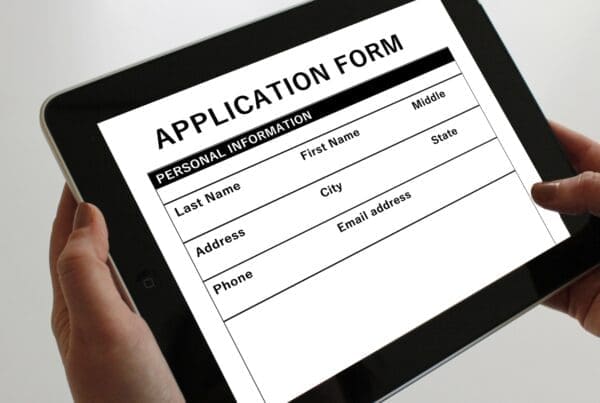You may well have heard this term being used a lot in the past 12 months, along with other ‘COVID’ related words which I am sure will stick in our minds for years to come. But does your business fully understand the term and are you using it as part of your HR planning and thought process for 2021?
The ISO 22316:2017 standard defines organisational resilience as:
“The ability of an organisation to absorb and adapt in a changing environment to enable it to deliver its objectives and to survive and prosper.”
A simple translation, when disruption occurs there are protocols in place to absorb the situation without significant impact to your business operations. Disruption can be any number of things, cyber-attacks, terrorism, political change, IT breaches; however, the past 12 months it has been specifically linked to the pandemic and how your business and leadership team has adapted or can adapt to the situation. There have been a number of surveys conducted and research into how businesses have responded to the pandemic and what characteristics have been prevalent in companies that have managed to cope and adapt to the pandemic successfully. The evidence collected has concluded that businesses that have reacted to the following phases and have been agile enough to respond are considered to be highly effective in terms of business resilience in relation to COVID-19.
React and Respond & Return and Transform
A business that reacted quickly and efficiently early last year would have identified:-
- The employees that would be directly affected by the pandemic, set up response task forces and supported remote workers and furloughed staff where possible and within guidelines.
- Understood what was required of the business to respond in terms of risk and put protocols in place to deliver communication and IT systems and some simply just brought to life their Business continuity plan.
- Ensuring that the workforce could continue to meet the business requirements.
A business that responded to the situation would have:-
- Introduced and implemented new programs for employees affected by the pandemic including remote work training, staff wellbeing programs and access to online support and daily communication between staff members and management.
- Rolled out amended business processes in relation to employment terms and conditions, recruitment and performance.
- Invested in training key personnel to ensure that they were equipped to deal with impending HR issues and more importantly communicating with and supporting individuals remotely.
A business that looked beyond the immediate situation and the Return to work would have:-
- Considered the support needed for Recovery and Burnout of functions and employees.
- Considered the impact on the working environment for when staff were able to return to work and the creation of new health & safety policies and risk assessments.
- Worked alongside the Finance Department to consider the additional resource required to facilitate the return to work.
- Considered the impact on a return to work for all staff members individually and how the business will support staff.
A business that Transformed during the initial response would have:-
- Considered the product and service offerings of the business. Considered the impact of logistical changes brought about and adapted to accommodate new restrictions.
- Adapted and reinvented the business model and amended the business plan and business objectives.
- Considered new business strategies such as working from home, training and operational needs.
- Considered and not lost sight of the longevity of the business and its goals.
When considering Business Resilience, it’s important to consider the different elements of the business. The HR function carries a heavy responsibility to consider and form a strategy for resilience planning and delivery. As shown over the past 12 months, the organisations that have given sufficient resources or external support to do this have been able to be more agile in their response and have managed in the main to continue with operations, to meet business objectives and look after the wellbeing of their companies’ employees.
We now call on the HR function to review the work done in the last 12months which was in response to the pandemic and support and lead with the next critical phases which are business recovery and longevity. To this effect the HR recovery plan and agenda will again look very different for each organisation and the top HR priorities will change. A recent report gave the following headings as top priorities.
Current and Future leadership – We need to boost Leadership Resilience to manage through disruption, change and uncertainty.
Help our leaders become connectors to build teams that feel prepared to navigate ambiguity. We need to Support leaders’ wellbeing and create leader-to-leader partnerships to encourage resilience. As HR professionals we also need to reach out to the right resources to deliver this business need. This may be support and training from outside of our organisation. Recognising the skill gaps and engaging leaders to understand the importance of evolving and developing will be key to the recovery and success of the business. Remember to monitor leadership effectiveness and skills gaps and if you haven’t already, think about succession planning and development. Our business will not look the same and we need to ensure our leaders can lead the way into the future. They are human after all and not robots!
Employee Experience – Sustain performance and engagement of a Hybrid Workforce and lead with flexibility.
This has been a key part of the support and tools put in place in the last 12 months but it will be an ongoing part of business recovery and growth. Remember most organisations have adapted already, staff retention will be impacted on inability to be flexible where others can be. I really like the word Hybrid, I’m sure there will be many more descriptions of the new ways of working and what will be the new working norm for many. Gone are the days where your role was 100% office based. Your recruitment and EVP will be impacted as there will be more flexibility, more accessibility and completion for roles and the employers who have the right balance of business transformation will gain. Your communication methods & IT infrastructure may have been a short-term solution but it’s time to think long-term. Good business, telecommunication, e-Learning & HR systems are going to be valued. The employee on-boarding will need investment and revamping this is not just for new staff but re-boarding homeworkers, furloughed staff, temps and contractors is also going to be key. Your benefits and reward packages importantly need reviewing.
Organisation Design and Change Management – Plan and execute the return to the workplace.
Understand that returning to work will be a change for everyone, some may want to continue to work from home others may want a hybrid of two. Regularly pulse the workforce to understand employee readiness for returning to the workplace and encourage open lines of communication between managers and employees to build two-way communication about the return. This is going to be a difficult time for all. Remember if it has been possible for the last 12 months why would it not be possible going forward? A business that adapts to changes is a business that also wants to grow and thrive. If you are in the process of becoming a lean organisation and having to support the business through change management remember that it will not be just the individual directly impacted that need support but the remaining team also need support to adjust and adapt to change. Dynamically Reskill and Redeploy Talent.
Future of work – Adapt, adjust, understand and grow with a new vision.
Lay the groundwork for the ‘New Normal’, understand predictions for what the future of work will look like and assess the likelihood of impact to your organisation. Use predictions to keep a forward-looking perspective on how decisions made during recovery will impact the future sustainability of the business and its long-term goals. Do not forget that the organisation will look and feel very different to the one that was in place 12 months ago and each decision will bring along with it its own challenges and considerations. Important to remember we have learnt what is possible, we have learnt trust, we have learnt flexibility, and we have learnt that we are no longer halted by the use of technology. We have been reminded of the importance of communication and engagement. We understand the importance of building resilience to support our leadership, our employees and ourselves which effect productivity, morale, staff welfare and the positioning of the business in its market.
Our staff wellbeing and wellness should always be a priority and individuals may still continue to be impacted as a result of the recent pandemic for another 3-12 months following. This may be as a result of working from home and the recent lockdown restrictions. We need to plan and understand the impact of Long COVID for our organisations to be able to support employees and managers and use the right tools and training to monitor absence, mental health and wellbeing.
I recently attended a webinar by Anna Farrington of www.WHIB.co.uk on Long COVID, up until the webinar I was aware of the new medical word being used but really didn’t understand what it meant, the symptoms or the debilitating impact to an individual’s day to day life. Nor did I realise that the number of individuals now being impacted with Long COVID was increasing. The importance of planning and having the tools in place to understand and support individuals was highlighted to me and I believe that the long lasting impact of COVID-19 symptoms is going to impact on business recovery and the HR function if we cannot adapt and continue to learn.
In summary what does all this mean for us as HR? It means change!! We have completed our first stage which was reactive we now need to review our current process and policies, help the business become flexible and adapt in order to recover and thrive. We need to take a step back from the barriers and challenges and come up with solutions that are forward thinking and will enable business growth. Ask yourself: What worked really well? What could we do more of? What else is possible? We need to engage and maintain that partnership with our managers and leaders and employees and understand the possibilities along with the business needs. We need to be positive and believe in our culture to enable us to support morale. Look outside of the box instead of an always inward-looking approach, make sure the way your employees are treated extends to their personal life, and that there are visible efforts to contribute to the local community which also helps to reinforce company culture and brand awareness. A focus on company culture has never been so important, and to always put employees first.
Importantly, remember we as HR also need to recover and move forward!! The business will evolve and change as will our working practices and the way we support. Therefore, it’s okay to reach out for help and have a good network of support, some solutions will need to be creative and cost free and all need to be sustainable and support the business needs and objectives.
 Author: Pem Paddick (Chartered MCIPD), Director, Treenhill Consulting Ltd
Author: Pem Paddick (Chartered MCIPD), Director, Treenhill Consulting Ltd
www.treenhill.co.uk | info@treenhill.co.uk
Pem has over 15 years’ experience of working within the corporate and commercial environment as a strategic HR & Finance Director, Business Partner to Board of Directors and Senior Leadership team. Combining working expertise and knowledge gained, she and her associates assist client businesses to gain the maximum from their HR function whether in terms of the quality, development and retention of staff, strategic business growth or managing a range of HR projects.





